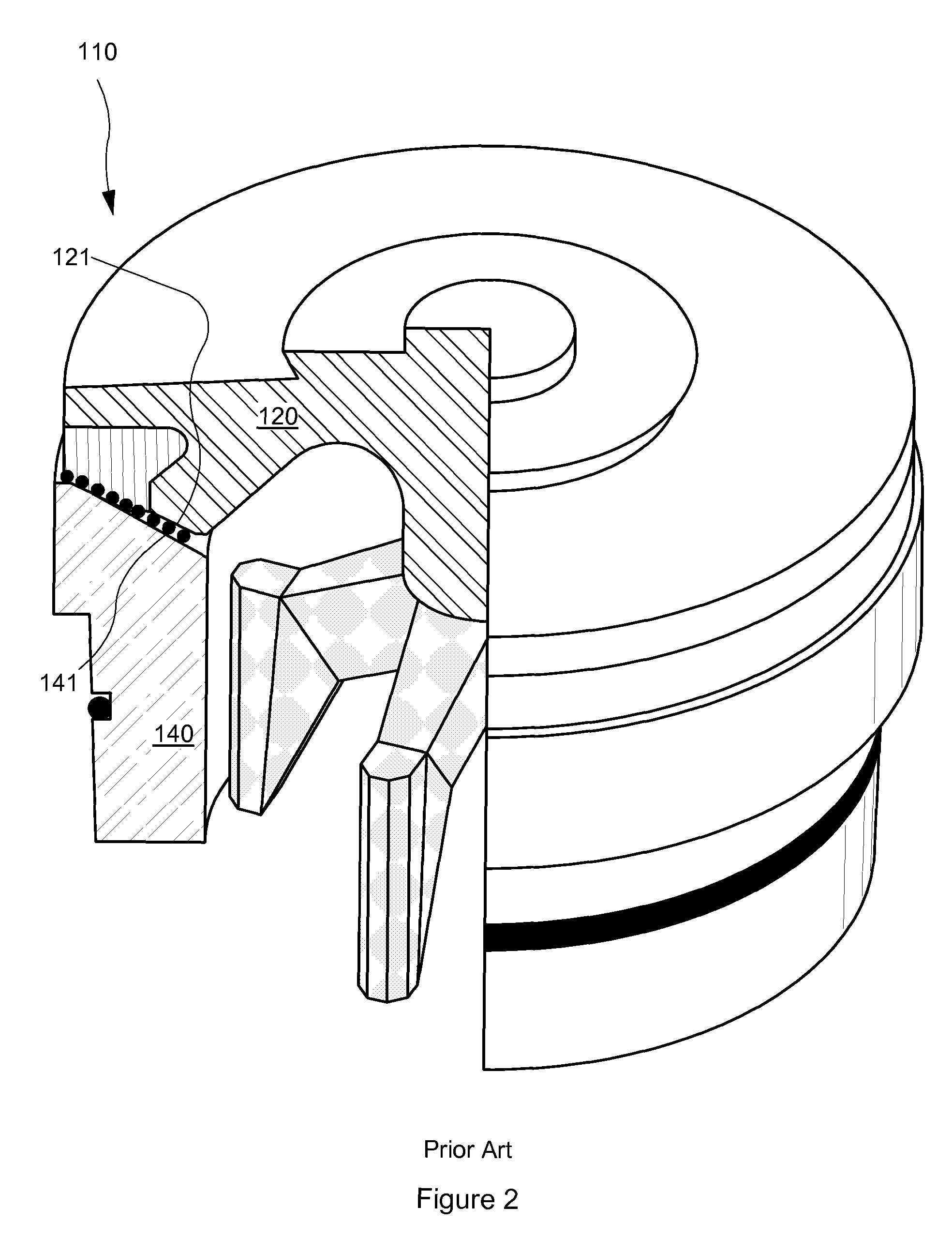Powdered metal inlay
a technology of powdered metal and inlay, which is applied in the field of powdered metal inlay, can solve the problems of premature valve failure, high pressure and repetitive impact load on the valve body and valve seat, and high pressure on the valve seat, and achieves high density, high repeatability, and preservation of hardness and wear resistan
- Summary
- Abstract
- Description
- Claims
- Application Information
AI Technical Summary
Benefits of technology
Problems solved by technology
Method used
Image
Examples
first embodiment
[0059]FIG. 8 schematically shows a first embodiment valve seat 70′ comprising an inlay ring 10′ (analogous-in-part to inlay ring 10) and a hull ring 50′ (analogous-in-part to hull ring 50). Valve seat 70′ is obtained after the inlay ring and hull ring of assembly 70 are sealingly vacuum brazed together (with a filler metal) and then HIPPED (i.e., exposed to HIP), followed by finish machining. Due to its relatively high modulus of elasticity (compared to the hull ring modulus of elasticity), inlay ring 10′ substantially retains the initial predetermined shape to which inlay ring 10 was ground. And due to its relatively lower modulus of elasticity, hull ring 50 would be relatively more affected (e.g., distorted) by HIP than inlay ring 10. Thus, the finish machining required after HIPPING to make valve seat 70′ produces a hull ring configuration 50′ which differs from the shape of hull ring 50. Adding to such differences in shape are features (comprising, for example, peripheral flange...
fifth embodiment
[0061]the invention comprises a method of making an inlay on a metal substrate (see, e.g., valve seat 70′ in FIG. 8), the method comprising providing a metal substrate (see, e.g., hull ring 50 in FIG. 6) having a substrate modulus of elasticity. The method then comprises providing a compressed powdered metal inlay (see, e.g., inlay ring 10 in FIG. 5) comprising at least one metal carbide and at least one nonvolatile cement. The method then comprises sintering the compressed powdered metal inlay and grinding to an initial predetermined shape to make an inlay preform, the inlay preform having a preform modulus of elasticity substantially greater than the substrate modulus of elasticity. The method then comprises sealingly vacuum brazing the inlay preform to the metal substrate to make an evacuated assembly having at least one evacuated bonding area between the inlay preform and the metal substrate. And the method finally comprises applying hot-isostatic-pressure to the evacuated assem...
PUM
| Property | Measurement | Unit |
|---|---|---|
| back pressure | aaaaa | aaaaa |
| pressure | aaaaa | aaaaa |
| porosity | aaaaa | aaaaa |
Abstract
Description
Claims
Application Information
 Login to View More
Login to View More - R&D
- Intellectual Property
- Life Sciences
- Materials
- Tech Scout
- Unparalleled Data Quality
- Higher Quality Content
- 60% Fewer Hallucinations
Browse by: Latest US Patents, China's latest patents, Technical Efficacy Thesaurus, Application Domain, Technology Topic, Popular Technical Reports.
© 2025 PatSnap. All rights reserved.Legal|Privacy policy|Modern Slavery Act Transparency Statement|Sitemap|About US| Contact US: help@patsnap.com



